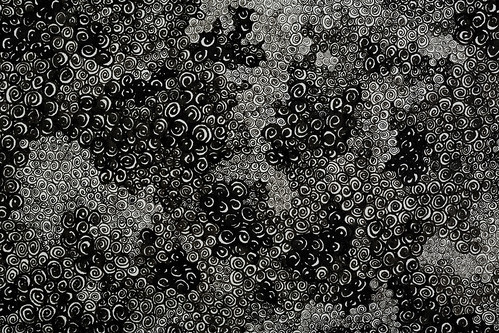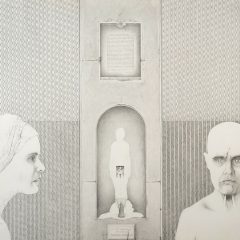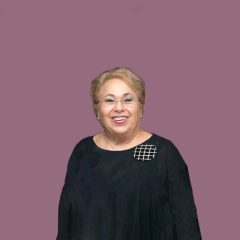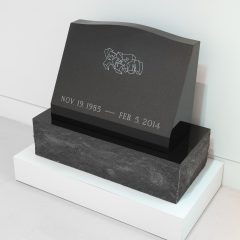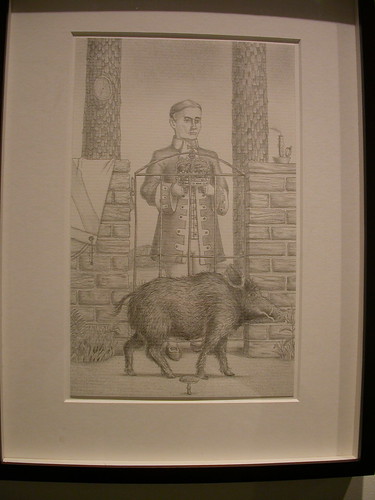
A drawing by Matt Fisher in The Drawing Narrative, the exhibit now up at Jenny Jaskey Gallery; photo taken by Robert Fallon
In the middle of artist Matt Fisher‘s talk last week, I thought, gee, this is interesting. So I pulled out a pad and started taking notes.
Matt was speaking at Untitled, Jenny Jaskey Gallery‘s brand new forum on contemporary art that she hopes will help “people to appreciate (and buy!) contemporary art (and works made locally!),” Jaskey wrote us in an email.
This first event, organized around her current exhibit The Drawing Narrative, featured talks by Fisher, Pennsylvania Academy of the Fine Arts Curator of Modern Art Robert Cozzolino, and Gallery Joe Director Rebecca Kerlin. The event drew in more than 100 people at the gallery, and they gamely stood through the whole thing or sat on the floor. Somehow, the standing made the contact between the speakers and the listeners more intimate–and also may have shortened the comments, which meant things moved along quite nicely.
By time I got my pen rolling, Matt Fisher was nearly done, so I don’t have much of what he said. He did say that although his work is narrative and the narrative is not the main reason for his making the art. “There’s enough openness for the viewer to fill in exactly what they want,” he said. He also said he thinks of himself as primarily a painter, and his drawings supported his paintings.
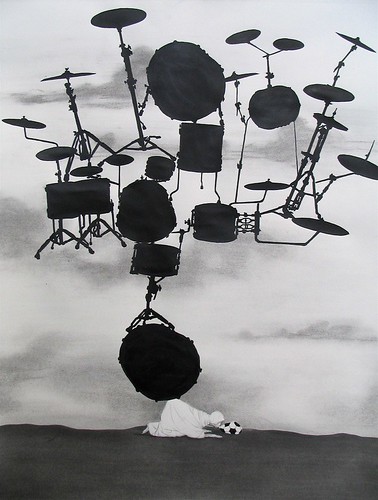
I did get many of the things Becky Kerlin said. Kerlin’s Gallery Joe shows mostly works on paper, and Print Center Curator John Caperton said this about her earlier this year in an interview: “Another person I admire is Becky Kerlin [at Gallery Joe]–she found a niche and operates in that niche that she’s really excelled at. They do great shows. If you bought one piece from each show, you’d have an amazing collection!”
After giving tribute to Anne d’Harnoncourt (see post on her death), Kerlin said, “As I learned the business, I began seeing I was more in tune with drawing [than other art forms]. …I think it has something to do with being the daughter of an architect.”
Kerlin said she grew up with a house full of drawings, and switched her gallery to drawing in 1999, after seing a Mark Lombardi show at the Drawing Center. “If this is drawing, if this is art, then this is what I want to be involved in,” she recalled saying to herself. Drawing burst on the art scene as a field of its own in the ’90s, she said, partly because of the Drawing Center‘s presence.
Sixty percent of Kerlin’s sales are outside Philadelphia. She does one or two art fairs a year to get her artists out in the world and “to validate what I’m doing.”

Rob Matthews, The Great Disappointment #4, 2007, graphite on paper, 11×18.25, image–one of the images in The Drawing Narrative; image courtesy the artist
As for me, I say, Yo, Philly, what’s with you? Buy art and buy it here in town.
Cozzolino staked his ground as the de facto drawing curator at PAFA because he is the only curator there right now. That drew a laugh. When he landed at PAFA, he got thrown into the mission of creating an enormous works on paper show for the 200th anniversary of PAFA, showing work dating from the 1700s to the present from the collection. “I looked at every work the Academy owns on paper.” Here are links to our posts on the show:
libby’s post
roberta’s post
Cozzolino cited Alfred Stieglitz, who made no hierarchical distinction between drawings, sculpture and painting. “It’s the idea of the thing that matters.”
The delicacy of drawings, though, raise questions about how to show them without degrading them, and how much to spend on them. He’s been asked when proposing to buy a drawing, “‘Do we really want to spend $25,000 on a drawing we can only show every few years because of preservation issues?’ Or do we spend that much money on a painting?”
His own view is, “Go for the great object, no matter what medium it’s in.” He also said that we can’t look into the future and know what kinds of lighting and conservation advances will be made. Perhaps perservation will not be an issue. He did mention that PAFA will be looking for a way to cover the skylights in the historic building to protect drawings on exhibit.
Cozzolino also talked about his personal taste. His first love was 15th century Flemish paintings. The 20th century works he loves now include symbolism, narrative constructivism and mystery–which all refer back to the Flemish work. He likes work that is visceral, creates its own parallel world, and is personal. He mentioned that Astrid Bowlby‘s and Rob Matthews‘ work both have that (Matthews is one of the artists in Jaskey’s The Drawing Narrative exhibit; the others, besides Fisher, are Holly Coulis, Rubens Ghenov, Ridley Howard, Robyn O’Neil and Charlotta Westergren).
The question and answer session brought up some other issues in drawing:
Question on validity of digital drawings
Cozzolino would include them as legitimate drawings. He referred to recent Pew winner Charles Burwell’s recent work using computers as an example. Fisher said he himself uses Google images to search, as part of his process. Kerlin held back a little, saying she hadn’t yet seen computer work that interested her, but that things in the last five years have gotten more interesting.
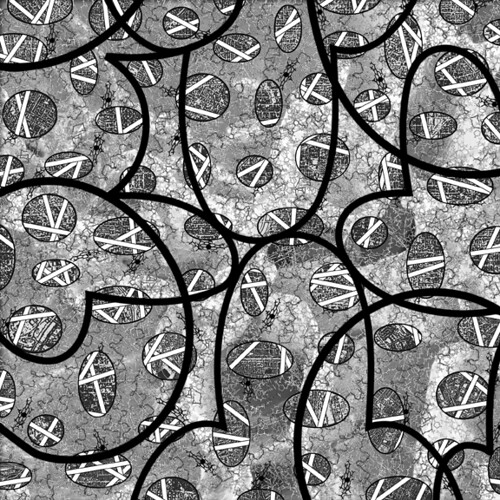
Charles Burwell, Flood, 21 x 21, archival digital print, created on the computer and shown in October at Bridgette Mayer Gallery.
Question on the seeming increase of interest in drawings
Kerlin suggested that it may have had to do with the influence of cartoons. “I have a son, a drawer. And he is not alone. …There was a tremendous amount of stuff they [her son and his friends] were doing that had to do with superheroes, drawing action on paper. …It allowed the figure to come back into art in a way that wasn’t precious.”
Cozzolino agreed. He also credited the graphic novel. “Also the graffiti boom of the ’80s and the ’90s spilled over into the art world.
And Fisher talked about drawing being more affordable than a painting. An art lover “can buy a drawing for a tenth of the price.”
Abington Art Center Curator Sue Spaid (in the audience) added the influence of Raymond Pettibon, Paul McCarthy and Martin Kippenberger, as well as Ed Ruscha, may have increased the interest in drawing.
Cozzolino also added that the DIY aesthetic may have contributed.
Question on how define drawing.
Cozzolino said, I don’t define drawing. I let the object tell me what it is. I let the artist tell me what it is. Even Lightening Field, that could be a drawing directly lightening to make marks in space.
Fisher, applied the old line about pornography to drawing: When you see it, you know it.
Kerlin said people can imagine the time it takes to make a drawing. They can imagine how it was done, how long it took to make each mark.
Art critic and curator Judith Stein mentioned The world’s Largest Drawing, a YouTube phenomenon, in which an artist draws his self portrait on the earth, using the trajectories of a series of airplane trips as the medium.
While I was answering a cell phone call during the talk, someone asked how people kept up with everything going on in Philadelphia, and Cozzolino answered, Roberta and Libby. This tidbit from Roberta. I had to put that in to sort of make it real because I missed it!
This being the first of the Untitled forums, it was free and open to one and all, but Jaskey is creating a (nominal, I think) membership requirement for the events, and promises behind-the-scene tours of area institutions, visits with private collections, and talks by contemporary art experts and enthusiasts. When I ever get through to Jenny (I’ve been trying for days) I’ll add it to the post. She probably was busy with last night’s fundraiser for Art Briefs, a Philadelphia art calendar in the works that she has been working on with others, including David Kessler, Annette Monnier and Rebecca Saylor Sack.



